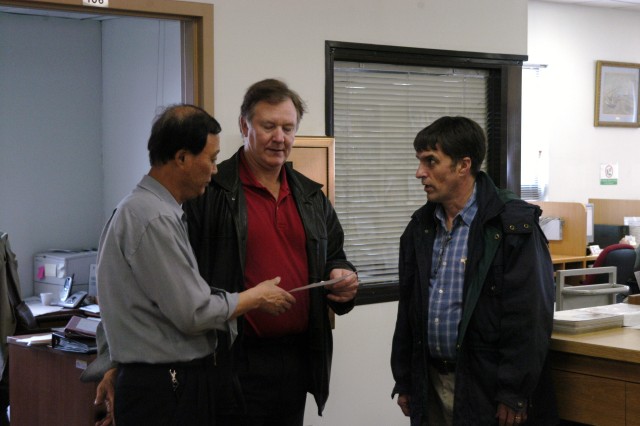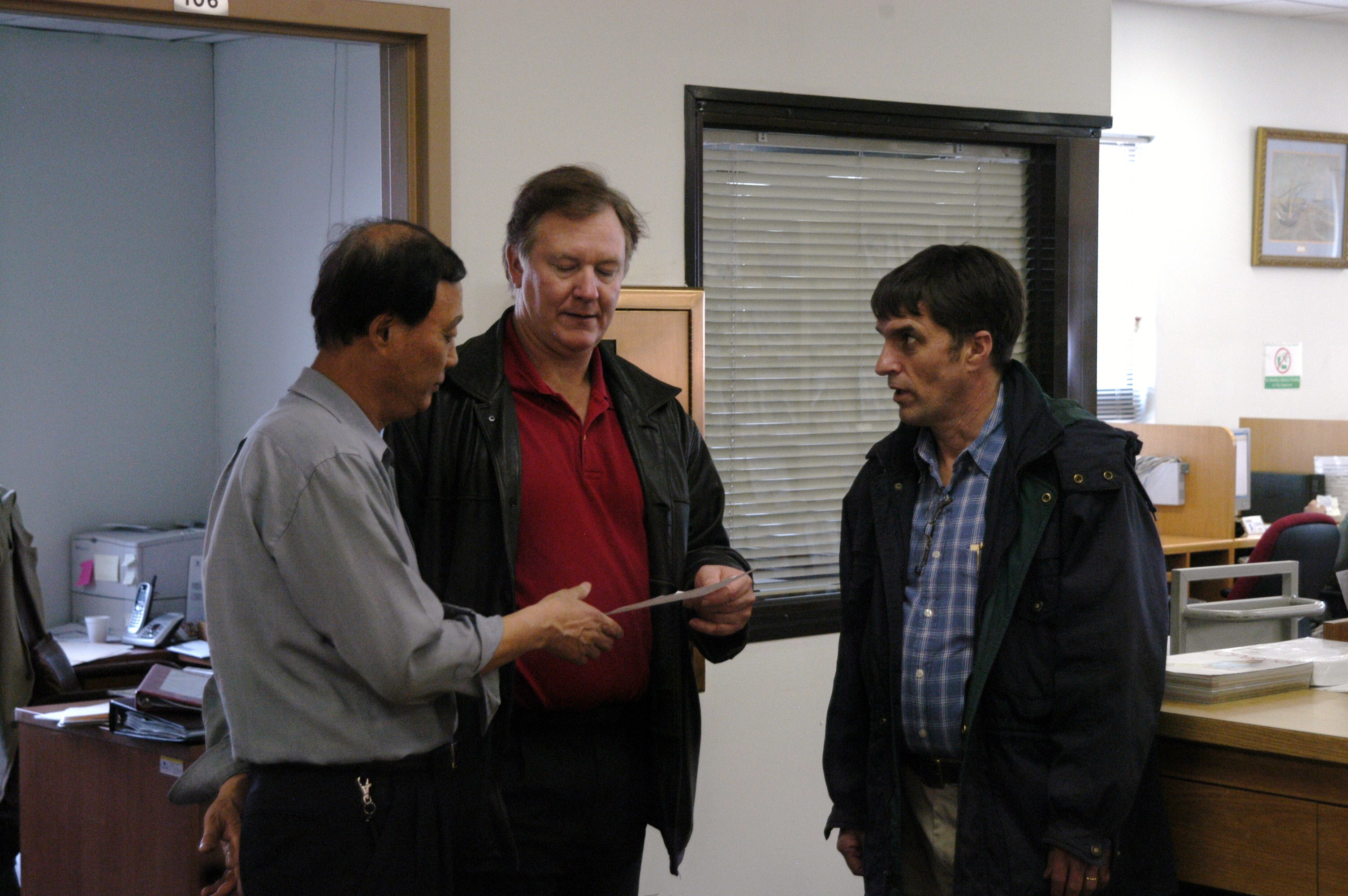
project with Choe, Chon sik (left), administrative librarian assistant and
Gordon Imrie, librarian, USAG-Red Cloud library. Toepper is working on the library ordering process ... VIEW ORIGINAL
RED CLOUD GARRISON - Lean Six Sigma project sponsors and green belts received training by Black Belt Todd Knowlton, contractor, Installation Management Command-Korea March 27 in the USAG-RC conference room to learn how to identify, define, categorize and execute projects.
"Lean Six Sigma is a methodology focused around process improvement," Knowlton said.
Black Belts receive special training in process improvement, teamwork, change and project management and time is allocated to them to assist an organization in improving performance.
Project sponsors are senior leaders or area managers with formal authority and ownership for the processes being improved. Project sponsors assign belts to a project, assist in writing charters, and approve tollgates. In general, project sponsors push the projects along, and are critical to the Army's Lean Six Sigma success.
"The first and most important stone to be laid for a successful Lean Six Sigma project is strong project sponsorship," said Richard C. Davis, USAG-RC deputy commander. "Last year we did a good job of getting our green belts certified. One of the lessons learned though was green belts shouldered most of the responsibility for the projects. They were the sponsors. This year we need project sponsors to take a more active role because project sponsors are the owner of the project."
The proposed project team consists of a sponsor, green belt (leader), and team members.
"As the owner, the project sponsor would recruit a green belt," Knowlton said. "Green belts would execute the project. A project sponsor needs to see it from start to finish, and have the right team members from the functional areas. Also, one needs the money and time to get the job done."
The work begins by choosing a new project and filling out an IMCOM project template with a focus on speed, quality and cost.
"Green belts and project sponsors can work together on this form," Knowlton said. "We want to be efficient but also effective too."
First, the problem/opportunity statement is where the problem is described with quantitative details such as length of problem and severity and identification of the process and its associated metrics; second, business impact/case stating why this project should be done and what are the intangible and value of these benefits; third, goal statement, what is going to get better if this project is done and how can success be measured; fourth, project scope, what are the boundaries of the project; and fifth, the solutions center master black belt comments.
The idea is then submitted to the commander and other directors on the executive quality council. The region EQC identifies two categories of criteria: impact, anticipated effect that successful completion of a project will have on the important metrics of the organization; and effort, the estimated risk and resources required to successfully execute the project and implement solutions.
"The green belt, project sponsors and team members look at the pitfalls, challenges and roadblocks with my help" Knowlton said. "Presently, USAG-RC has three green belts have projects in the works."
Green Belt, Joyce Bailey, Plans, Analysis and Integration Office, is working on a living quarters allowance payment alignment project.
"Geraldine Jones, Civilian Personnel Activity Center director, and I are talking about the present system for LQA payments," Bailey said. "I also will talk to Resource Management and the Yongsan Housing Office personnel."
Green Belt, Margo Davis, PAIO, is working on furniture repair.
"I am working with Housing and Resource Management as my team members," Davis said.
Green Belt, Steve Toepper, USAG-Casey librarian, project is the ordering process at libraries.
"My team members include Ron Fortin and Chris Bishop from Family and Morale, Welfare and Recreation; Gordon Imrie, USAG-RC librarian and Chon, Pyong yon, USAG-Casey librarian.
PAIO accepts ideas for Lean Six Sigma anytime and Kent Garcia said it doesn't matter how big or how small a project seems. However, if there is already a solution, there is a 'Just Do It,' where the project is carried out quickly over a day or two, and doesn't follow a standard LSS method.

Social Sharing